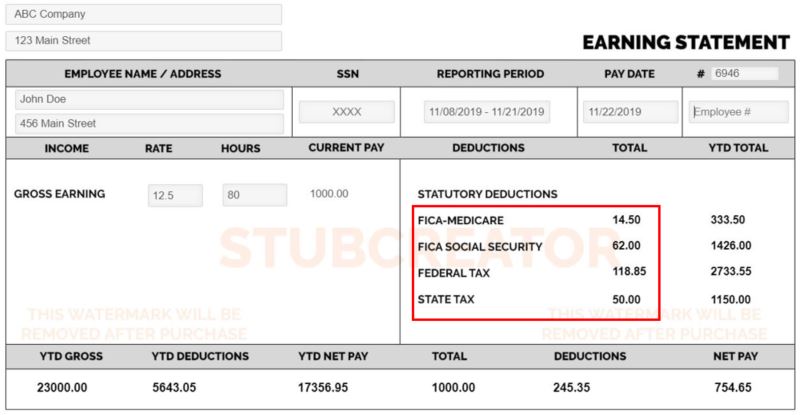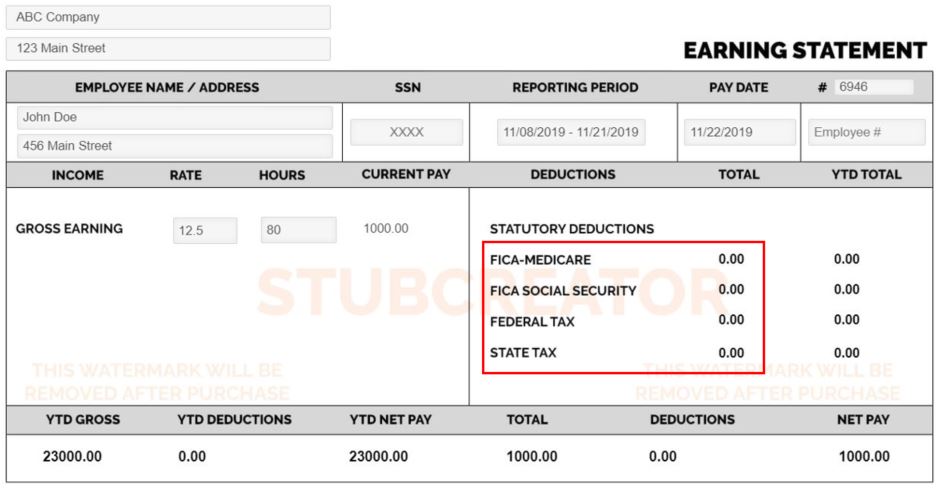The first (tax) concept I would like you to understand as a new agent is that you are not an employee. Similarly, the brokerage or agency you choose to work with is not your employer. Rather, you are what is known as an “independent contractor”. So what does it mean to be an independent contractor? It means many things, but if you’re reading this, it’s likely you’re most interested in understanding what the implications of being an independent contractor are from a tax perspective.
An independent contractor is a self-employed business owner, specifically a sole proprietor (assuming you did not file paperwork with your state to form an LLC or Corporation). I think the best way for me to explain what your tax obligations are as an independent contractor is to compare and contrast it to what you may be accustomed to as an employee.
How you are taxed as an employee:
As an employee, your employer withholds taxes from each one of your paychecks. The typical taxes withheld are (1) FICA – Medicare (2) FICA – Social Security (3) Federal Income Tax and (4) State Income Tax (if the state you reside in or earned income in has a state income tax). See the Employee Earning Statement example below.

Let’s breakdown the taxes that are being withheld and paid by the employee, John Doe, from the $1000.00 employee earning statement above.
FICA – Medicare: $14.50. This is 1.45% of the Gross Earnings of $1000.00 ($1,000 x 1.45 % = $14.50).
FICA – Social Security: $62.00. This is 6.20% of the Gross Earnings of $1000.00 ($1,000 x 6.2% = $62.00).
The combined FICA taxes (Medicare and Social Security) that are withheld for the employee is 7.65% (1.45% + 6.20% = 7.65%). It’s important to note that as an employee, you are paying 7.65% in FICA taxes (Medicare & Social Security) but what you don’t see on this earnings statement is that your employer, ABC Company, is also paying 7.65% so that a total of 15.3% (7.65% by the employee + 7.65% by the employer) is being paid in FICA (Medicare and Social Security) taxes.
Continuing with the remaining taxes that are being withheld from the earning statement above.
Federal Income Tax: When you start employment with your employer, your employer asks you to complete Form W-4 which informs your employer how much Federal Tax to withhold from your paycheck. The $118.85 withheld for Federal Taxes on the earning statement above is the result of how Form W-4 was completed by the employee.
State Income Tax: If your state has a State Income Tax, you also completed a form to inform your employer how much state taxes should be withheld from your paycheck. The $50.00 withheld for State Tax on this earning statement is the result of how the employee completed the applicable forms.
Note that the taxes above (FICA – Medicare, FICA – Social Security, Federal Income Tax and State Income Tax) are being withheld from your paycheck each pay period by your employer and your employer is remitting the taxes to the IRS and your State each quarter.
How are you taxed as an independent contractor (agent)?
Now, let’s compare the employee earnings statement to an earnings statement you may receive as an independent contractor:

You should be able to quickly observe that there are no taxes withheld from the earning statement above. Before you get too excited, this does not mean that you don’t have to pay the FICA (Medicare and Social Security), Federal and State Incomes Taxes. Rather, it means that you, as the independent contractor, are responsible for estimating your tax obligations and remitting the monies to the Federal and State government each quarter. But how much?
FICA (Medicare and Social Security): If you recall from above, I noted that you, as an independent contractor, are now a self-employed business owner. This means that you are now responsible for both the employer and the employee portion of FICA (Medicare and Social Security) Taxes. To confuse you, the IRS calls FICA taxes “Self-Employment” taxes when you are a business owner. This means you should be sending 15.3% of your net profit to the IRS in the form of estimated tax payments using Form 1040-ES each quarter. I am defining net profit as your commissions minus your expenses (such as advertising, business insurance, etc.).
Federal Income Tax: You must also estimate the Federal Income Tax you owe and remit the funds to the IRS on form 1040-ES each quarter.
State Income Tax: Similar to Federal Income Taxes, you must estimate the State Income Tax you owe and remit the funds to your State’s Department of Revenue each quarter.
So…you probably have some more questions right about now. For example, who is required to make estimated tax payments, who is not required to, when to start making estimated tax payments, when are the payment due, how to make the payments and what happens if you don’t make the required estimated tax payment? Don’t worry, I answer those questions here. I hope that you found this information helpful. Please feel free to comment or reach out to me directly should you have any questions or feedback.
One more thing I wanted to note is that the FICA – Social Security tax is capped at $137,700 for 2020 which means the net profit you earn above $137,700 is not subject to FICA-Social Security Tax. There is no cap as it relates to FICA – Medicare. In fact, net profit above $200,000 is subject to an additional 0.9% FICA – Medicare Tax.
About the author: Navi Maraj is a Certified Public Accountant in the State of Florida and is the President of FileYourBusiness.com, Inc. and the owner of Navi Maraj CPA, PLLC. FileYourBusiness.com is a website dedicated to educating entrepreneurs about legal entity types and their respective tax treatment. Additionally, Florida entrepreneurs can utilize FileYourBusiness.com to form their business. Navi Maraj CPA, PLLC is an accounting and tax firm specializing in helping independent contractors and small business owners.
Disclaimer: The content of this article is not to be considered legal or tax advice and is provided for informational purposes only.
